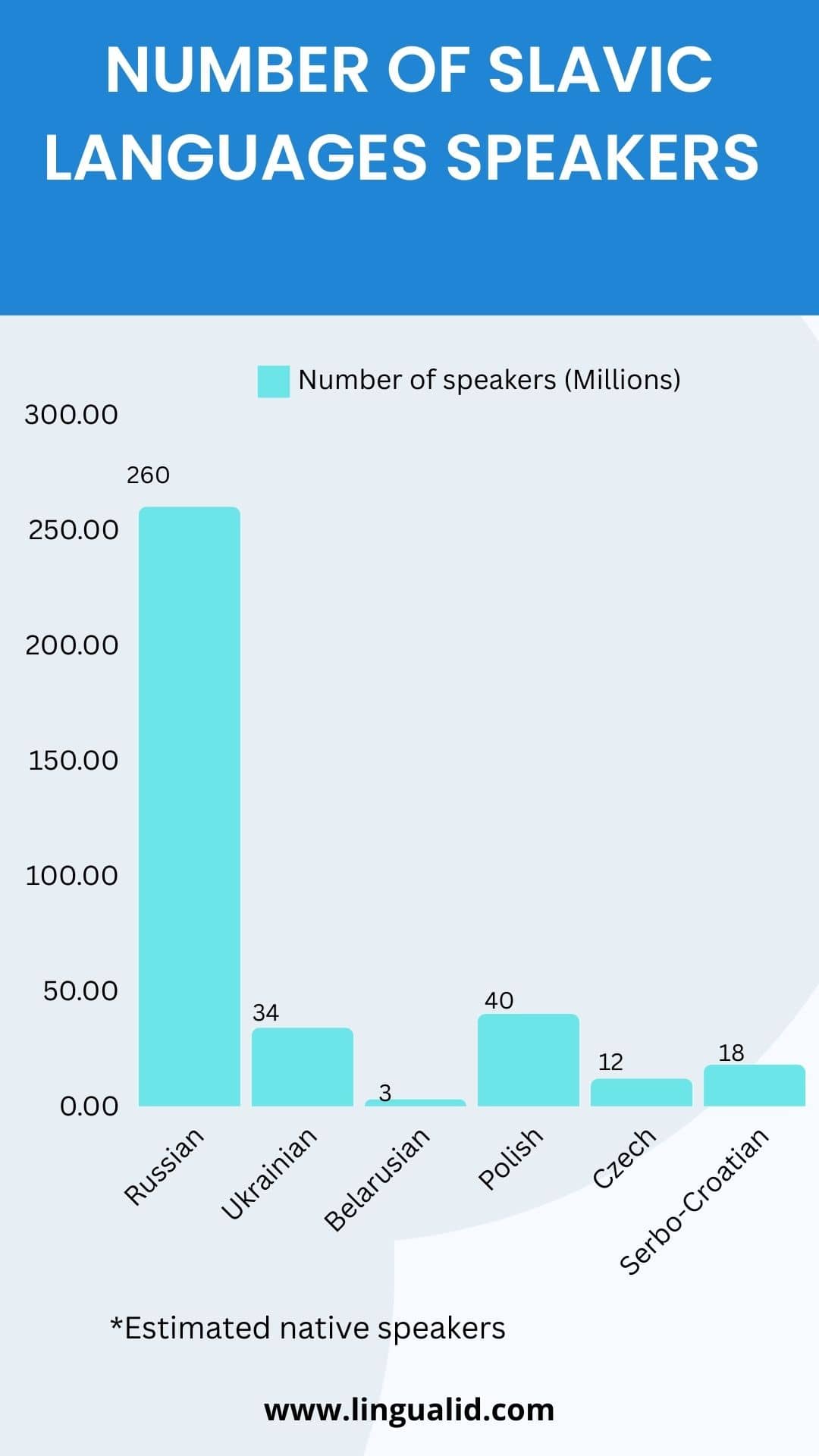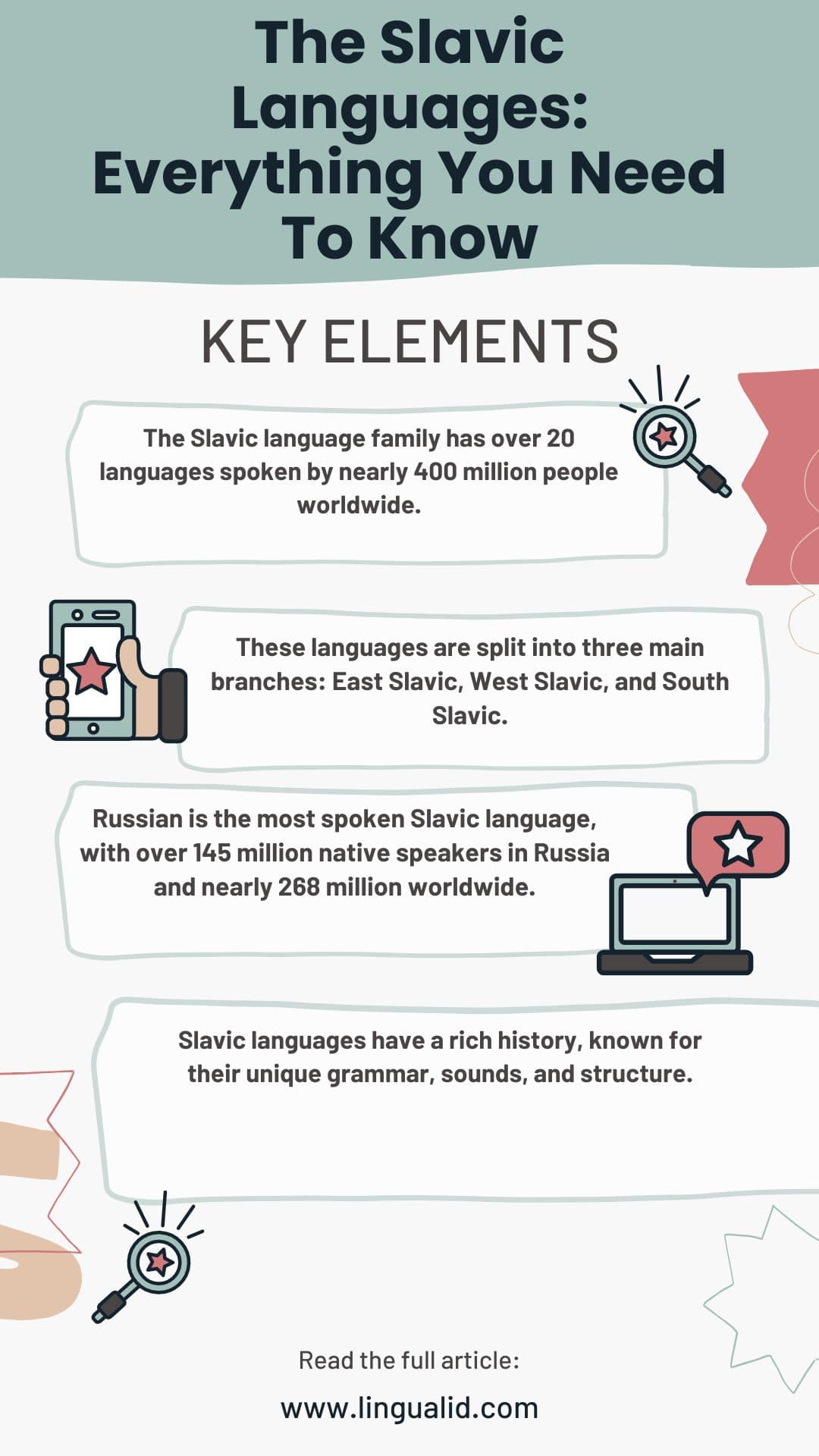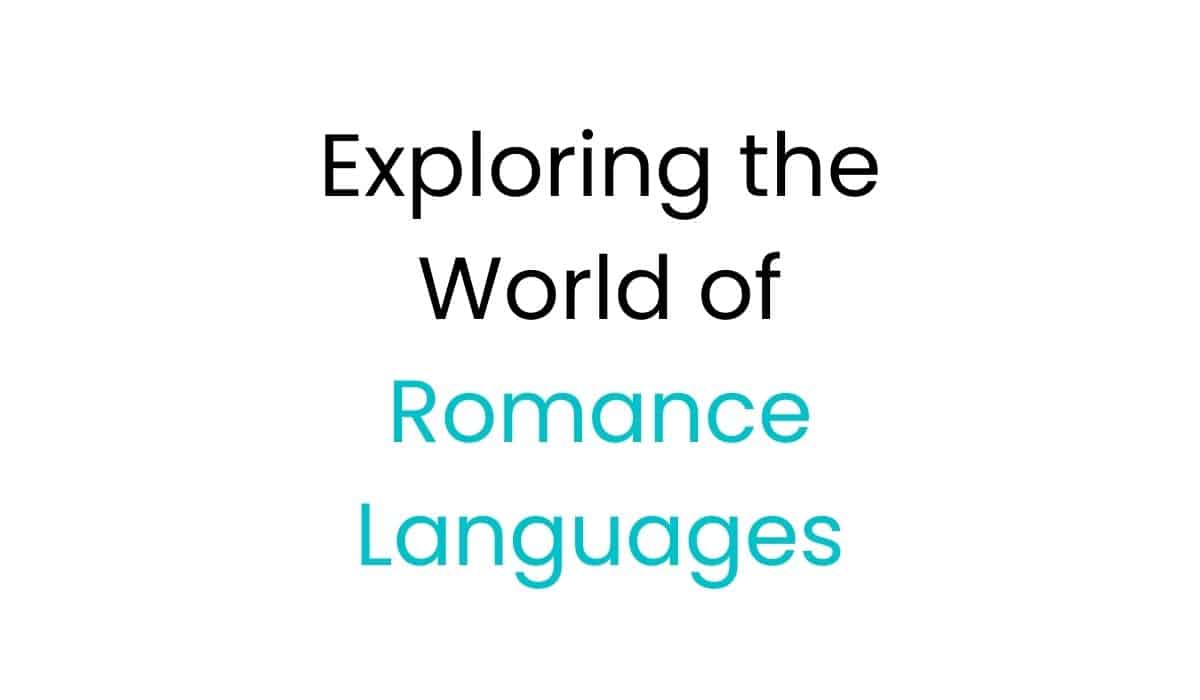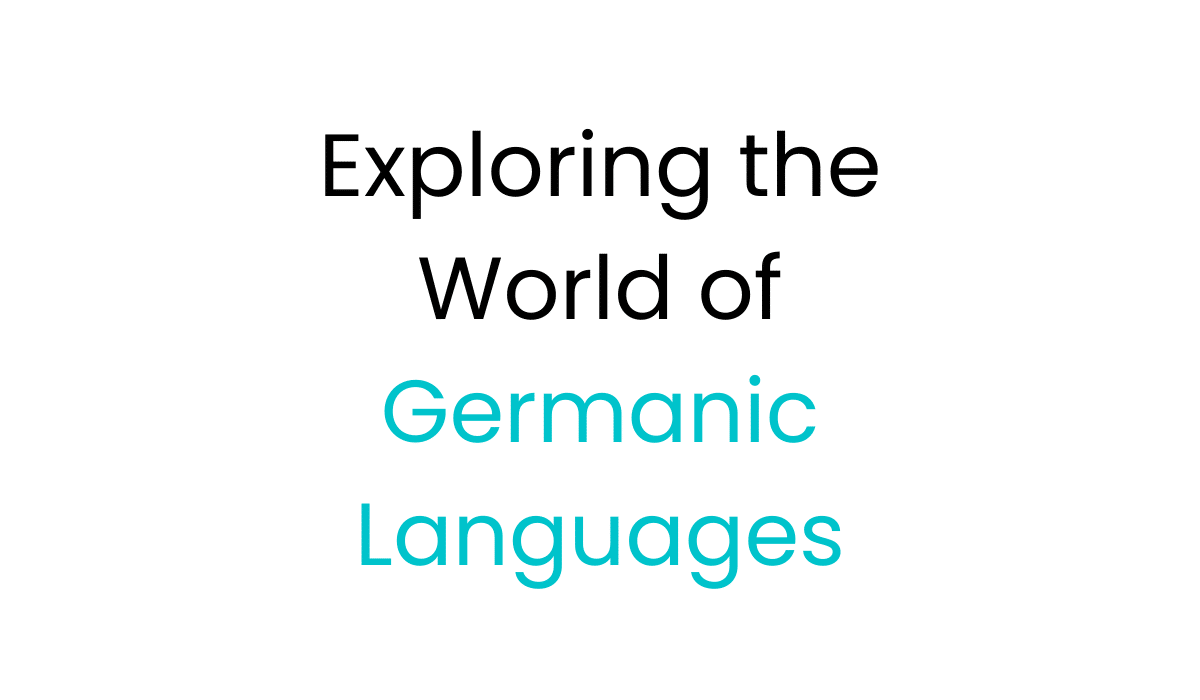The Slavic language family is a fascinating group that connects the Balkans, parts of Central and Eastern Europe, and all of Russia. It includes over 20 languages in three main groups – East, West, and South. Russian is the most famous, but each Slavic language has its own culture and unique features.
This guide will explore the origins, spread, and features of Slavic languages. We’ll look at grammar, sounds, and dialects. It’s a deep dive into the Slavic world, perfect for language lovers and scholars.
Key Takeaways
- The Slavic language family has over 20 languages spoken by nearly 400 million people worldwide.
- These languages are split into three main branches: East Slavic, West Slavic, and South Slavic.
- Russian is the most spoken Slavic language, with over 145 million native speakers in Russia and nearly 268 million worldwide.
- Slavic languages have a rich history, known for their unique grammar, sounds, and structure.
- How well different Slavic languages understand each other can vary, with some dialects mixing features from several languages.
- Key Takeaways
- Overview of the Slavic Language Family
- Geographical Distribution of Slavic Languages
- Russian Language
- Ukrainian Language
- Belarusian Language
- Bulgarian Language: The Cyrillic Treasure
- Serbo-Croatian: A Pluricentric Language
- Slovene: A Linguistic Mosaic
- Proto-Slavic and Proto-Balto-Slavic
- Grammatical Structures
- Phonology and Morphology
- What are the Slavic languages?
- What are the major Slavic language groups?
- What are the linguistic features of the Slavic language group?
- How mutually intelligible are the Slavic tongues?
- What is the cultural significance of the Slavic language group?
Introduction to the Slavic Languages
The Slavic languages are a key part of the Indo-European family. They come from a common ancestor called Proto-Slavic. This language grew from the earlier Proto-Balto-Slavic, connecting Slavic tongues to the Baltic languages.
Overview of the Slavic Language Family
The Slavic family is split into three main groups: East Slavic, West Slavic, and South Slavic. These languages are spoken by about 315 million people around the world. They live mainly in Central, Eastern, and Southeastern Europe, and parts of Central Asia.
Geographical Distribution of Slavic Languages
Slavic languages cover a wide area, from the Baltics to Central Asia and Eastern Europe. This shows the historical spread and cultural impact of the slavic language family. The family range from East Slavic in Russia, Ukraine, and Belarus to West Slavic in Poland, Czechia, and Slovakia. The South Slavic languages are found in the Balkans.
| Slavic Language Subgroup | Example Languages | Approximate Number of Speakers |
|---|---|---|
| East Slavic | Russian, Ukrainian, Belarusian | Over 300 million |
| West Slavic | Polish, Czech, Slovak | Around 65 million |
| South Slavic | Serbo-Croatian, Bulgarian, Slovene | Around 50 million |
The slavic language distribution across Europe and Asia shows the wide impact of this indo-european language family and balto-slavic languages. They have greatly shaped the culture and language of the region.
East Slavic Languages
The East Slavic languages include Russian, Ukrainian, and Belarusian. They are the most spoken Slavic languages. Russian leads with over 268 million speakers, thanks to its deep literary roots and Cyrillic script.
Russian Language
Russian is Russia’s official language and also in other countries and territories. It’s the most spoken Slavic language, spreading across Eurasia. This is due to the Russian Empire and the Soviet Union’s historical impact. The Russian alphabet has 33 letters and its unique sounds and grammar make it stand out.
Ukrainian Language
Ukrainian is spoken by over 34 million people, mainly in Ukraine. It’s closely tied to Russian and Belarusian, but has its own special traits. Ukrainian has unique dialects and a distinct vocabulary, marked by the apostrophe for the hard sign.
Belarusian Language
Belarusian is the official language of Belarus, with about 3 million native speakers. It’s heavily influenced by Russian and Ukrainian, sharing a similar stress pattern and Cyrillic script. Belarusian has its own dialects and literary history.
Over time, the East Slavic languages have developed their own distinct features and cultural identities. They remain crucial in Eastern Europe, influencing literature, education, and communication widely.
| Language | Speakers (Millions) | Alphabet | Official Status |
|---|---|---|---|
| Russian | 268 | Cyrillic (33 letters) | Official language of Russia and several other countries |
| Ukrainian | 34 | Cyrillic (33 letters) | Official language of Ukraine |
| Belarusian | 3 | Cyrillic (32 letters) | Official language of Belarus |
West Slavic Languages
The West Slavic language group includes Czech, Polish, Slovak, and smaller languages like Kashubian and Silesian. These languages use the Latin alphabet, unlike their East Slavic cousins. They are distinct in both writing and speech.
These languages are spoken in the Czech Republic, Slovakia, Poland, and parts of Ukraine, Belarus, and Lithuania. Some are also found in language islands in Germany. They are grouped into three main categories: Czech-Slovak, Lechitic, and Sorbian.
Polish is the most spoken West Slavic language, with over 40 million speakers. It’s found in Poland, Lithuania, the Czech Republic, and Belarus, and also in France, the U.S., and Canada. Czech has about 12 million speakers, mainly in the Czech Republic. It has dialects like Bohemian, Moravian, and Silesian. Slovak has around six million speakers, mostly in Slovakia. Its dialects are similar to Moravian and Polish.
| Language | Native Speakers (Early 21st Century) | Main Dialects |
|---|---|---|
| Polish | Over 40 million | – |
| Czech | Approximately 12 million | Bohemian, Moravian, Silesian |
| Slovak | Around 6 million | Western Slovak, Central Slovak, Eastern Slovak |
The West Slavic languages have unique sounds and consonant groups. They split from East and South Slavic languages between the 3rd and 6th centuries AD. The tribes settled in Central Europe in the 7th century, forming polities like the Principality of Nitra and Great Moravia in the 9th century.
These tribes faced Germanization in the 11th century due to the Wendish Crusade. This event had a lasting impact on their languages and cultures.
Slavic Languages
The Slavic languages make up a big family with over 20 languages. They are split into three main groups: East, West, and South. These Slavic languages share things like complex grammar and flexible word order. But, they also have big differences, especially in writing and history.
In the East Slavic group, like Russian, they use the Cyrillic alphabet. The West and some South Slavic languages use the Latin script. These differences in writing and culture make each Slavic language unique.
| Slavic Language Branches | Primary Languages |
|---|---|
| East Slavic | Russian, Belarusian, Ukrainian |
| West Slavic | Polish, Czech, Slovakian |
| South Slavic | Serbo-Croatian, Slovenian, Macedonian, Bulgarian |
Russian, Belarusian, and Ukrainian are the top Slavic languages in the east. In the west, it’s Polish, Czech, and Slovakian. The south has Serbo-Croat, Slovenian, Macedonian, and Bulgarian. Russian is the biggest Slavic language by number of speakers and area in Russia. It’s also a lingua franca in Central Asia and some Eastern European countries.
“Learning a Slavic language can be a rewarding journey, as each language offers a unique cultural experience and a deeper understanding of the diverse histories and traditions of the Slavic world.”

South Slavic
The South Slavic languages are spoken by about 30 million people in the Balkans. They include Bulgarian, Serbo-Croatian, and Slovene. Each language has its own unique traits and cultural importance.
Bulgarian Language: The Cyrillic Treasure
Bulgarian is a South Slavic language with over 8 million speakers. It uses the Cyrillic script and is known for not having grammatical cases. This makes it different from other Slavic tongues.
Its language has been shaped by being close to languages like Albanian, Balkan Romance, and Greek. This has created a special mix of features.
Serbo-Croatian: A Pluricentric Language
Over 18 million people speak Serbo-Croatian, which is a pluricentric language. It has four main forms: Serbian, Croatian, Bosnian, and Montenegrin. These differ mainly in their scripts, showing the area’s cultural and political variety.
Slovene: A Linguistic Mosaic
Slovene is spoken by nearly 2 million people in Slovenia. It’s a newer Slavic language known for its many Slavic dialects. These dialects show the rich language diversity of the region.
Slovene has been influenced by Slavic and non-Slavic languages like German and Italian.
The South Slavic languages have unique histories and scripts. They show the rich language diversity of the Balkans. These languages keep evolving, keeping the region’s cultural and linguistic heritage alive.
History and Origins
Proto-Slavic and Proto-Balto-Slavic
The Slavic languages have a long and fascinating history, dating back over 3,000 years. The Proto-Balto-Slavic language started around 1500 BC. It then led to the Proto-Slavic language spoken by the Slavic people. This language stayed the same for about 2,000 years until around 500 AD.
By 1000 AD, the Slavic family had split into three groups: East Slavic, West Slavic, and South Slavic. These groups evolved into the modern Slavic languages we see today, like Belarusian, Russian, Czech, Polish, Bulgarian, and Serbo-Croatian.
The first written texts in Slavic languages appeared in the late 9th century AD. They were in Old Church Slavonic, a language based on South Slavic dialects from Greek Macedonia during the Christian era. Experts believe the Proto-Balto-Slavic language split into different languages between 1300 and 1000 BCE. The Komarov and Chernoles cultures are seen as Proto-Slavic.
“The history of the Slavic languages spans over 3000 years, starting around 1500 BC when the ancestral Proto-Balto-Slavic language divided into modern Slavic languages spoken in Eastern, Central, and Southeastern Europe, North Asia, and Central Asia.”
Linguistic Features
Grammatical Structures
The Slavic languages have complex grammar, with many cases that come from the Proto-Slavic language. This grammar lets for word order to change easily. Slavic languages use unstressed words that blend with stressed words, but mostly use inflection to show meanings.
Phonology and Morphology
Slavic language family stands out with its phonology, like palatalized consonants and complex sounds. They also have a rich morphology with many inflections for nouns, verbs, and adjectives. This makes them unique in the Indo-European family.
In South and East Slavic languages, stress moves around, affecting how they sound in poetry. Slavic stories and books use old language features that connect them to their ancestors.
| Linguistic Feature | Characteristic |
|---|---|
| Vowel Systems | Slavic languages have rich vowel systems with prosodic differences in pitch and quantity, particularly in Serbian and Croatian, Slovene, and Northern Kashubian. Differences in vowel quantity have also been preserved in Czech and Slovak due to contraction processes. |
| Consonant Systems | Slavic languages are phonologically rich in consonants, particularly affricates. Palatalization is a distinctive feature, resulting in complex sound developments. Voiced stop and fricative consonants also contrast with voiceless consonants in all Slavic languages. |
| Stress Patterns | While most Slavic languages have fixed stress accent, South and East Slavic languages exhibit movable stress patterns that influence their versification and phonological characteristics. |
Mutual Intelligibility and Dialects
The Slavic languages share a common ancestry but differ in how well speakers of one language can understand another. Within the same Slavic branch, languages are easier to understand. But, speaking across different branches can be harder because of the bigger language gap.
For example, Russian, Ukrainian, and Belarusian are closer in language because they split off more recently. They come from a common Proto-Slavic ancestor. However, speaking with West or South Slavic languages is harder and takes more effort.
This language family also has many dialects, which can make understanding each other harder, even within one language. For instance, Czech and Slovak are very close, making it easy for speakers to understand each other. But, the relationship between Serbo-Croatian and Slovene, Macedonian, and Bulgarian is more complex.
| Language Pair | Mutual Intelligibility Rate |
|---|---|
| Czech and Slovak | High |
| Bulgarian and Macedonian | 80% – 90% |
| Bosnian, Croatian, Montenegrin, and Serbian | Almost fully mutually intelligible |
| Czech and Bulgarian | Asymmetric intelligibility (Czech speakers may understand Bulgarian slightly better) |
These differences in how well these languages and dialects are understood have led to lively debates. Researchers and fans of languages are diving deep into these language connections.
Cultural Significance and Literature
The Slavic languages have deeply influenced the culture and literature of their regions. Russian literature is famous worldwide for its deep and impactful works. Authors like Pushkin, Dostoevsky, and Tolstoy have made significant contributions. Other Slavic tongues, such as Polish, Czech, and Serbo-Croatian, also have rich literary traditions.
These languages and dialects are more than just ways to speak. They are closely linked to the histories, customs, and identities of the Slavic people. Studying Slavic languages and literatures lets us see the unique views and experiences of the Slavic peoples.
The University of California, Berkeley, is celebrating the Slavic Department’s 100th anniversary in 2001. This department has a long history of studying Slavic, East European, and Eurasian languages and cultures. It offers many undergraduate programs in Slavic Languages and Literature. Students can learn about Armenian, Bosnian/Croatian/Serbian, Czech, Hungarian, Polish, Russian, and Ukrainian.
| Course | Description |
|---|---|
| Slavic 97: Introduction to Slavic Literatures and Cultures | Provides an interdisciplinary introduction to major issues in the field of Slavic Languages and Literatures, covering critical theory and major authors. |
| Slavic 147: Russian Fiction in the Soviet Era | Explores acclaimed works of Russian fiction, including titles like The Master and Margarita, Doctor Zhivago, and Invitation to a Beheading. |
| Slavic 171: The Holocaust in Polish Memory and Culture | Delves into the memory of the Holocaust in Poland, looking at related literary texts, German and Soviet occupations, and communist Poland’s use of this memory. |
| Slavic 164: Literature of Catastrophe: Ukraine 1917-2022 | Focuses on Ukrainian literature through catastrophic thinking, examining traumatic events like World Wars, the Holocaust, and Chernobyl. |
| GenEd 1057: Poetry Without Borders | Explores the role of poetry in crossing performative, linguistic, geographic, and aesthetic borders, studying contemporary poetry and poets who challenge boundaries. |
The Slavic language family and its rich cultural and literary traditions continue to fascinate scholars, students, and enthusiasts. They offer a unique and valuable perspective on the human experience.

Conclusion
The Slavic language family is a fascinating group with over 20 tongues across three branches: East, West, and South. They range from the widely spoken Russian to the less known Slavic microlanguages. Each language has its own culture and history, adding to the rich heritage of Eastern European and Eurasian languages.
These languages share common traits like complex grammar and sounds. Yet, they also show great diversity in scripts, how well they can be understood by each other, and dialects. This guide has shown us the beauty of this language family.
Knowing about the origins and growth of Slavic languages helps us appreciate their cultural and linguistic heritage. With about 300 million speakers, this language family is the 4th largest in the Indo-European family. This shows their global impact and influence.
The history and identity of the Slavic people have shaped their languages. This makes them important for culture and politics.
In conclusion, the Slavic language family is a rich and complex group. They offer a peek into Eastern Europe and Eurasia’s diverse culture and history. By diving into their details, we learn more about the region’s language diversity and its global impact.
FAQ
What are the Slavic languages?
Slavic languages belong to the Indo-European family. They are spoken by about 315 million people in Central, Eastern, and Southeastern Europe, and parts of Central Asia. These languages split into three main groups: East, West, and South.
What are the major Slavic language groups?
The main Slavic language groups are:
– East Slavic: Russian, Ukrainian, Belarusian
– West Slavic: Czech, Polish, Slovak, Kashubian, Silesian
– South Slavic: Bulgarian, Serbo-Croatian, Slovene
What are the linguistic features of the Slavic language group?
Slavic language family have complex grammar with many cases. They also have unique sounds like palatalized consonants. These languages have a lot of inflections for nouns, verbs, and adjectives.
How mutually intelligible are the Slavic tongues?
How well these languages are understood by each other varies. tongues within the same branch (like East Slavic) are easier to understand. But languages from different branches (like East and West) are harder to communicate in.
What is the cultural significance of the Slavic language group?
Slavic languages are key to the culture and literature of their regions. Russian literature is famous worldwide. Other languages like Polish, Czech, and Serbo-Croatian also have deep literary traditions. These have greatly influenced global culture.
Oualid Cheddadi is the founder of Lingualid, a platform that inspires independent language learners worldwide, regardless of the language they are learning. The name “Lingualid” is derived from the Portuguese word for “language,” “língua,” and the last three letters of Oualid’s name, “Lid.”



